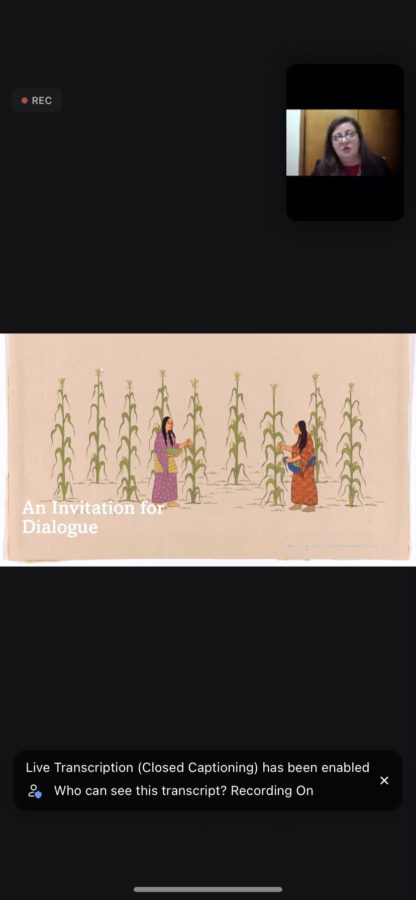USRC: Educating others through research
The beginning of a presentation on student research in gender and women’s studies.
Weber State University hosted the second annual Utah Southwest Regional Conference on Student Research in Gender and Women’s Studies in the Shepherd Union Building on March 30 and 31.
The event began on March 30 at 6:30 p.m., with a presentation titled “(Re)imagining Selu: Healing our communities through healing ourselves” by Devon Isaacs over Zoom. Isaacs is a citizen of the Cherokee Nation of Oklahoma and has received numerous awards throughout her research, which focuses on Indigenous communities.
Through the story of a divine character called Selu sacrificing her body to nourish others, Isaacs taught how women tend to take on too much, in professional and personal roles. She emphasized that the ability to nurture those around them is a unique and powerful gift most women have, but it is most effective when women care for themselves, too.
The presentation ended with a Q&A, where Isaacs highlighted more of Cherokee tradition and provided advice on dealing with guilt.
On the second day, student presentations were split up into three one-hour sessions, with three rooms that hosted three to four presenters each. The presenters consisted of students from Utah State University, Brigham Young University, Weber State and Amity University in India.
The presentations were around 15 minutes each and covered a wide range of topics.
Rachel Lyons, a student from BYU, analyzed the play “La Laureta” by Maria Martinez Abello, an 18th-century Spanish playwright who is almost completely unknown.
Lyons summarized the play and explained how the themes of social class and victim-blaming have been previously misunderstood.
The next presentation was from Emily Slater and Kadie Kunz from USU. They had conducted research regarding cosplaying scientists and worked with the organization Cosplay for Science throughout their research. With their research, they talked about how cosplay is connecting scientists to the public and is challenging previous ideas of who scientists are supposed to be.
“The research question we brought here today is ‘How do scientists resist or challenge norms and assumptions about who participates in science?’” Slater said.
Their research consisted of interviews with a diverse range of students, to gain their insight into what a scientist is and how those norms are being challenged.
Another USU student, Jade Velazquez, gave a brief speech on her experience with microaggressions.
“An impactful way to prevent microaggressions is to educate yourself,” Velazquez said.
In the next session, BYU students Collette Burton and Alexandra Carlile Butterfield both presented on femininity in biblical lore.
Burton taught about a grotto in Jerusalem with a breast-shaped stalactite that drips white water. She described the lore behind it, and analyzed the symbolism and connotations of feminine fluids, like breast milk and menstrual blood in ancient Christianity.
Butterfield presented the “Golden Miracle” altar-piece, a unique piece of religious art in that it depicts the lives of some of Jesus Christ’s female ancestors. Butterfield discussed the significance of their portrayals in the panels and pointed out patterns and meanings in the paintings.
WSU student Raissa Rohbock presented research on the experiences of women who were pregnant and gave birth in prison. She explained that because prisons are designed for men, they are often unprepared to care for an expecting mother.
“One of the primary questions we had was, ‘Were these institution measurements taking care of these women?’” Rohbock said.
Rohbock’s research concluded that prisons and jails are poorly prepared to help women through pregnancy and birth. This lack of proper care has resulted in multiple infant deaths.
After two sessions of presentations, a luncheon was provided. The final hour-long session was held, and the event was concluded due to the previously-planned walking tour being canceled due to weather conditions.







